No.5
UV-curing resin
Features
What is UV-curing resin?
This is a material that "polymerizes and cures in a short time by the energy of ultraviolet rays (UV) emitted from an ultraviolet irradiation device".
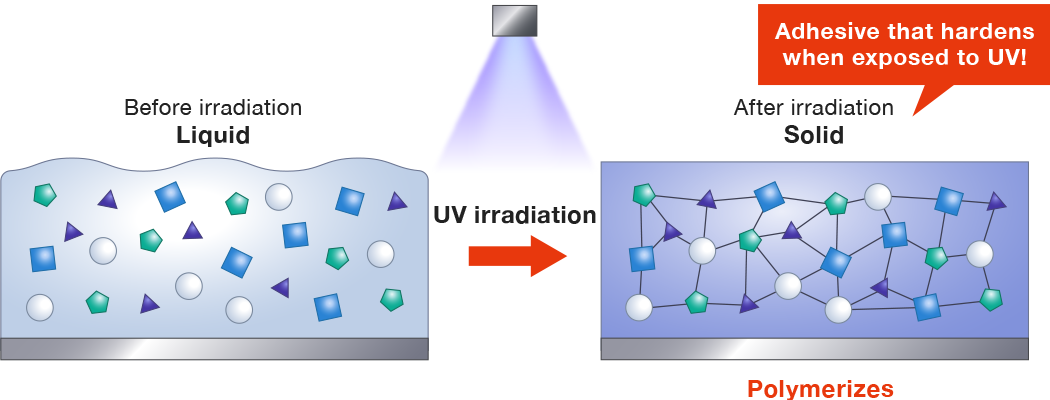
Excellent properties of UV-curing resin
- Fast curing speed and shortened working time
- As it does not cure unless it is irradiated with UV, there are few restrictions on the application process
- One-component nonsolvent with good work efficiency
- Realizes a variety of cured products
Curing method
UV-curing resins are roughly classified into acrylic resins and epoxy resins.
Both are cured by UV irradiation, but the reaction method is different.
Acrylic resin: radical polymerization

Epoxy resin: cationic polymerization

When UV is irradiated to epoxy type adhesives, cation (acid) is generated and the reaction starts.
Features due to differences in photopolymerization types
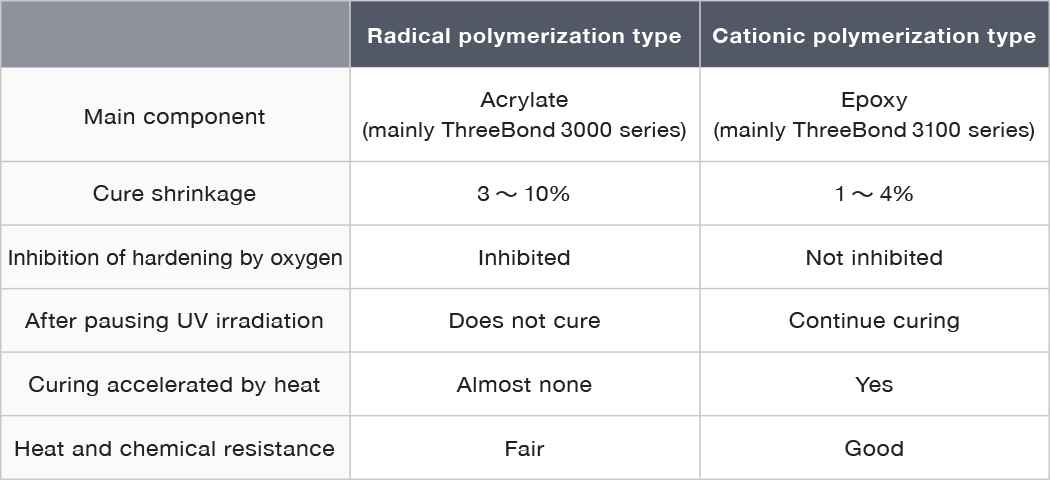
UV irradiation devices
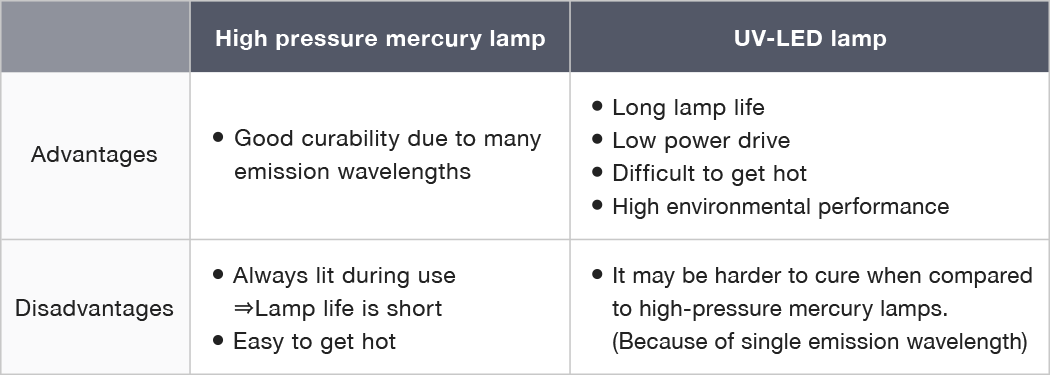
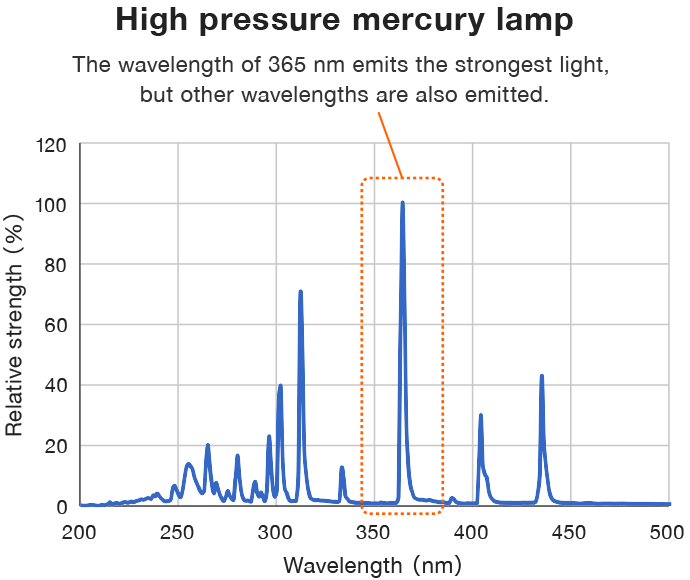
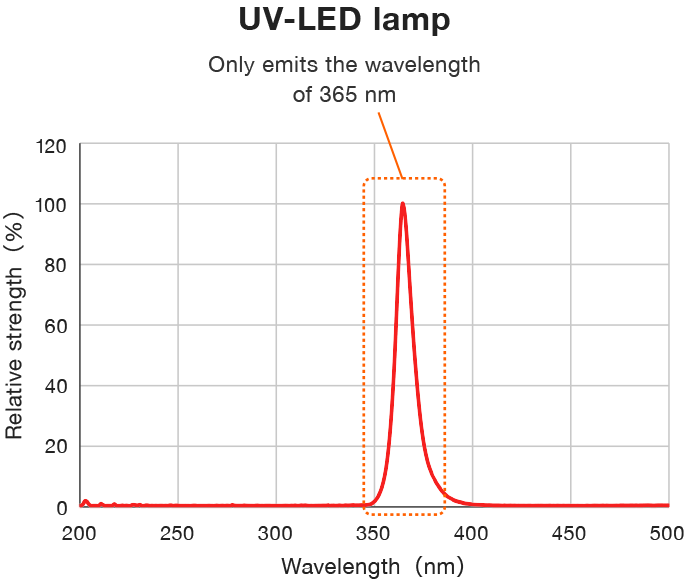
Uses
UV-curing resins have the following uses.
Smart watch / smartphone
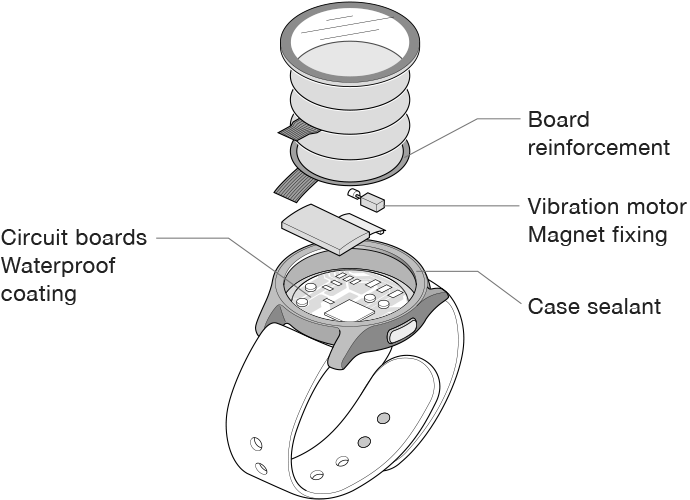
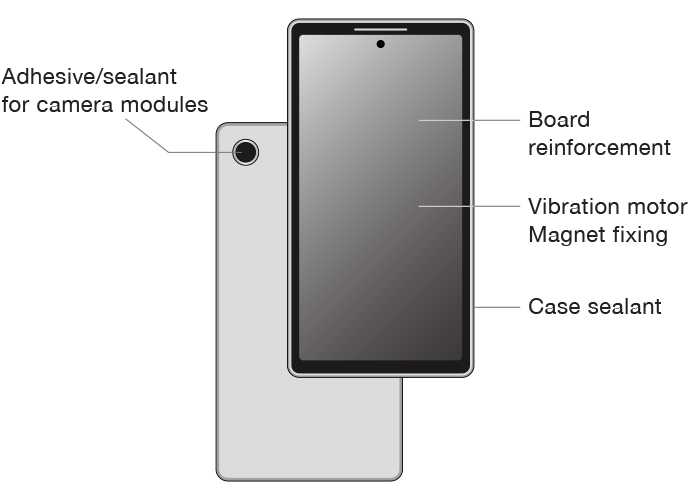
Digital camera

In-vehicle related (in-vehicle camera / liquid crystal display)
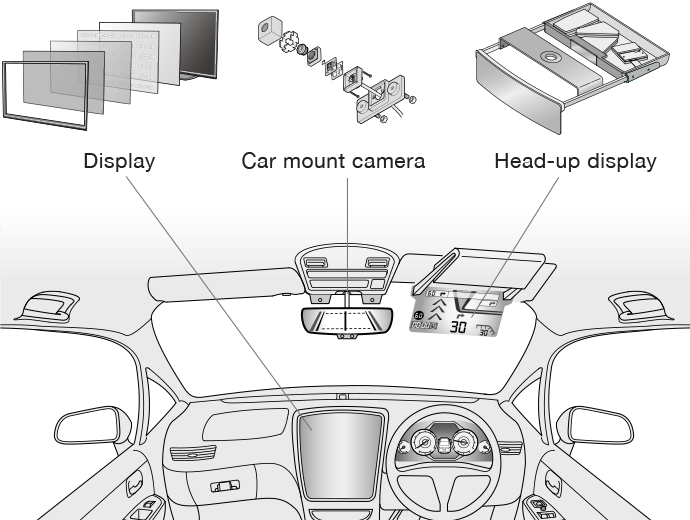
FAQ
-
Q
The resin does not cure even when irradiated with a UV irradiator. Why?
-
A1
The curing conditions for UV-curing resin are determined by the UV intensity and irradiation time.
Check if the specified integrated light intensity is ensured. -
A2
Is the material you want to bond a material that allows UV to pass through?
Even if it is a transparent plastic, if it contains a UV absorber, it is difficult for UV to pass through. Only use it after carefully checking the characteristics of the material.
-
Q
When using UV resin, is it okay to transfer it to another container?
-
A
TB3000 series containers are made of a special material that does not allow UV to pass through.
Avoid metal containers and use opaque or light-shielded polyethylene or polypropylene containers. Also, do not return leftover resin to the original container.
-
Q
What do you advise for maintaining a safe working environment when curing UV resin?
-
A
Even if you do not touch the resin directly, you may get a rash due to the gas generated when passing through the UV irradiator. Always ensure the workplace is well ventilated.
Also be sure to wear masks, protective goggles, long-sleeved shirts, gloves, etc. when working in order to minimize skin exposure.
Precautions for use
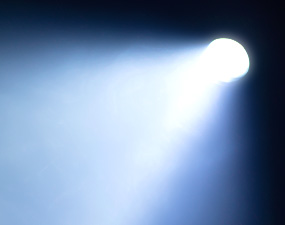
Confirmation of curing conditions
Intensity, time, lamp used (lamp type and wavelength)
Work environment
Shading measures, use of protective equipment, introduction of local ventilation
Irradiation device management
Lamp life, filters, mirror stains
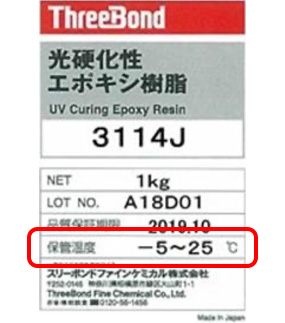
Storage method
Check the storage method (humidity) for each product
Set the optimum irradiation conditions according to the purpose.
By evaluating the resin under the same curing conditions as in mass production, troubles at startup are minimized.
Check regularly to see if the set irradiation conditions are maintained.
Summary
UV-curing resin is a one-part, nonsolvent adhesive that cures in seconds without polluting the work environment with solvents.
It has excellent mass productivity and greatly contributes to shortening the manufacturing process.
At ThreeBond, we strive to create products that best meet your design requirements.

When UV is irradiated to acrylic-based adhesives, radicals are generated and the reaction starts.